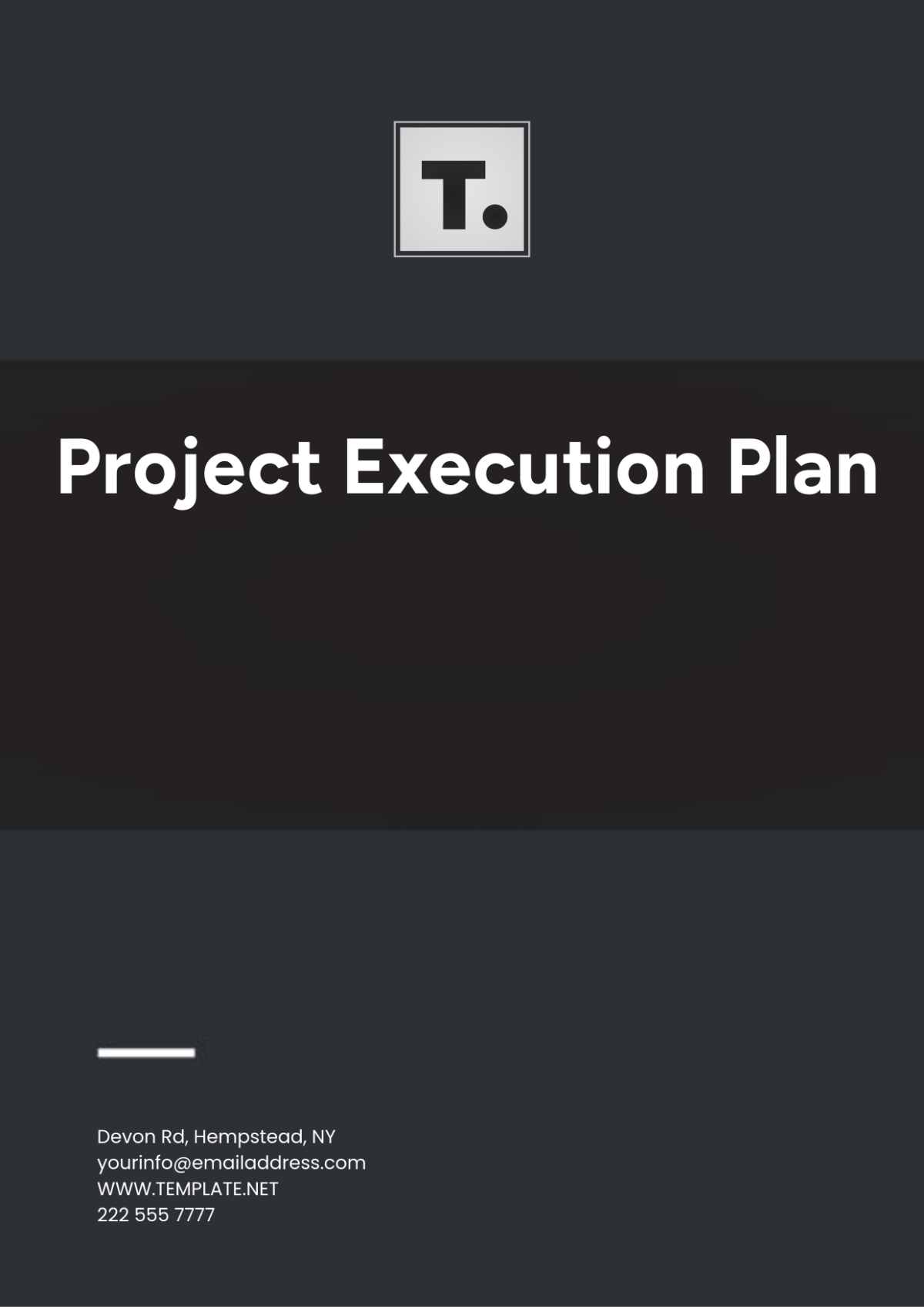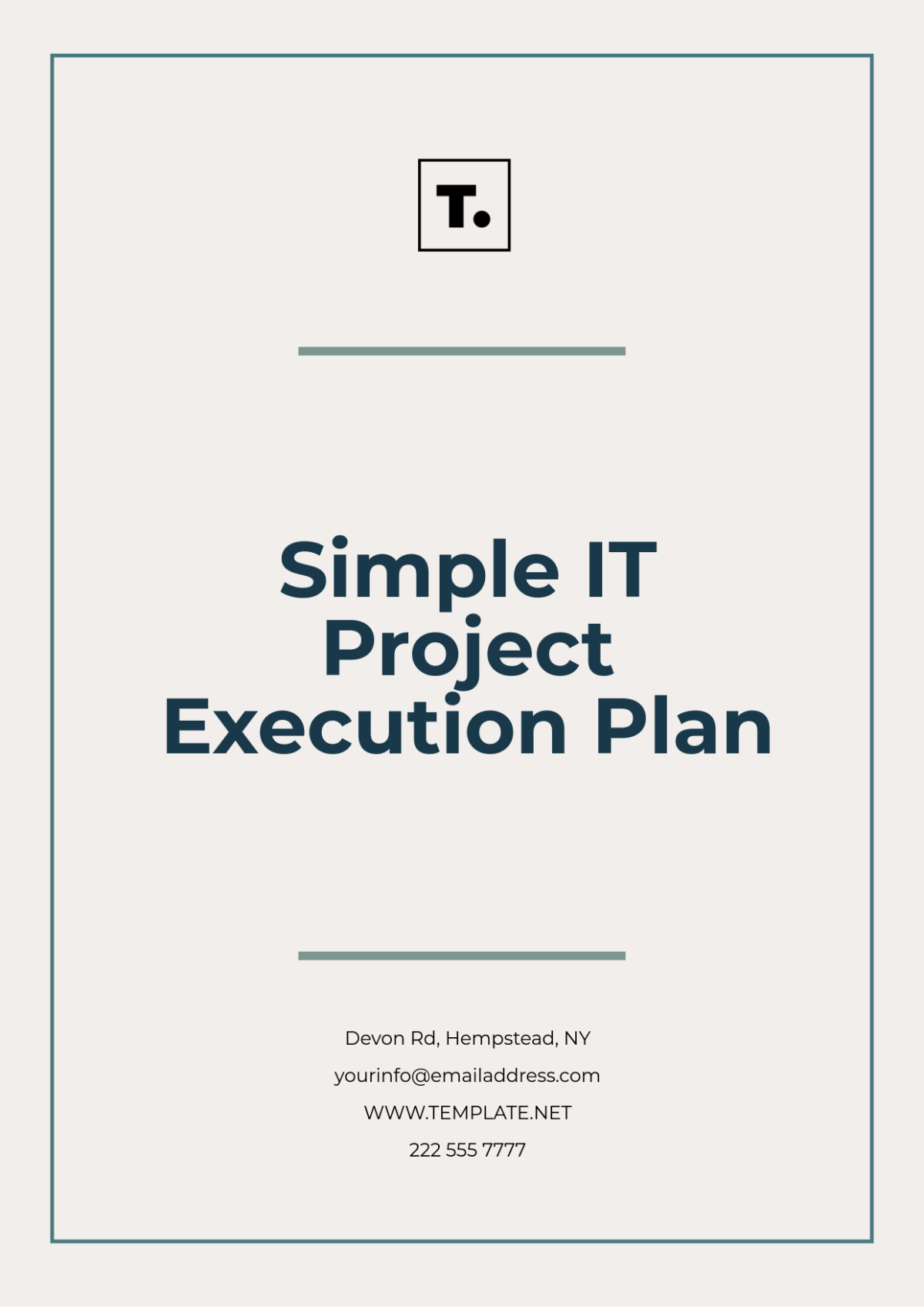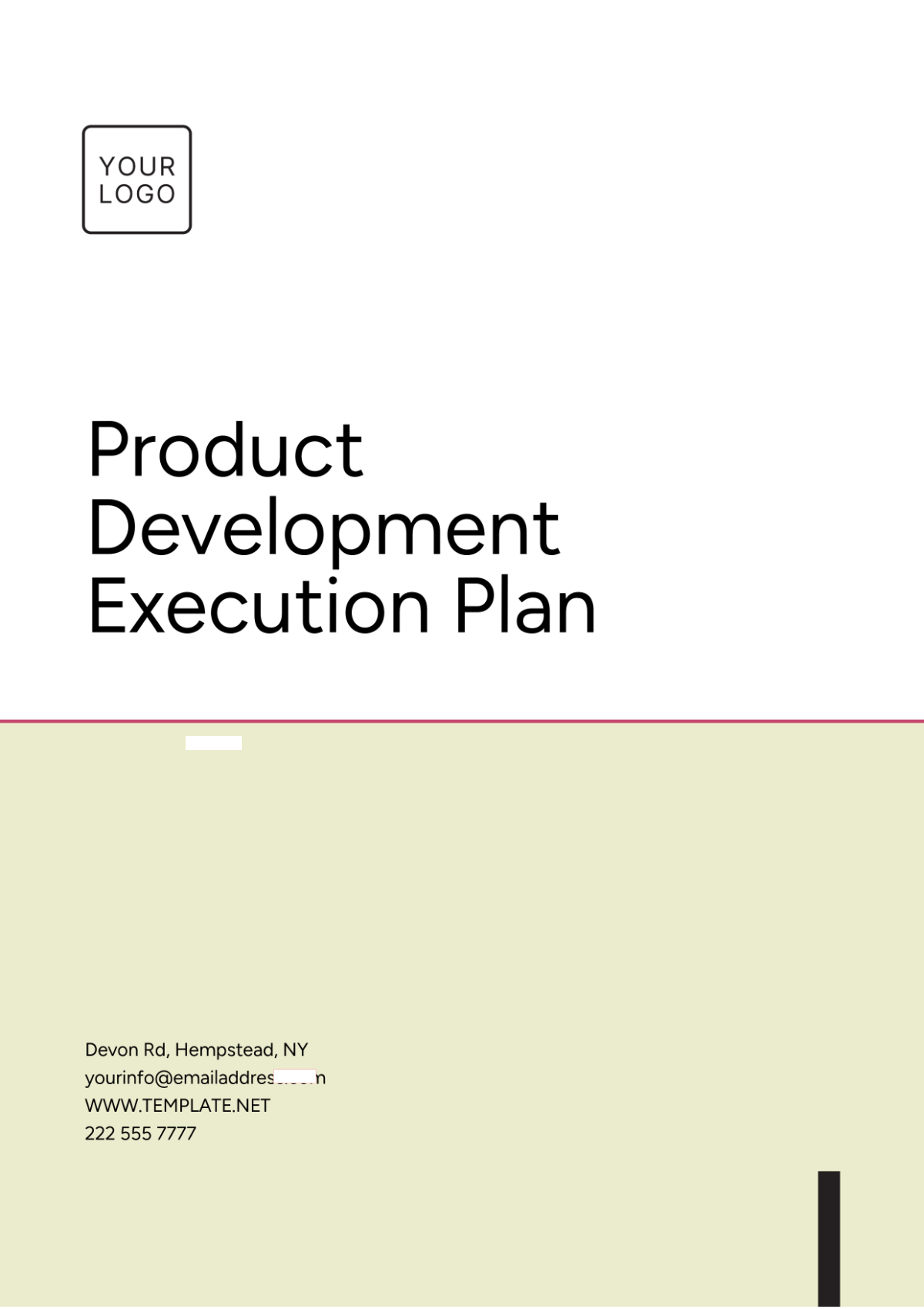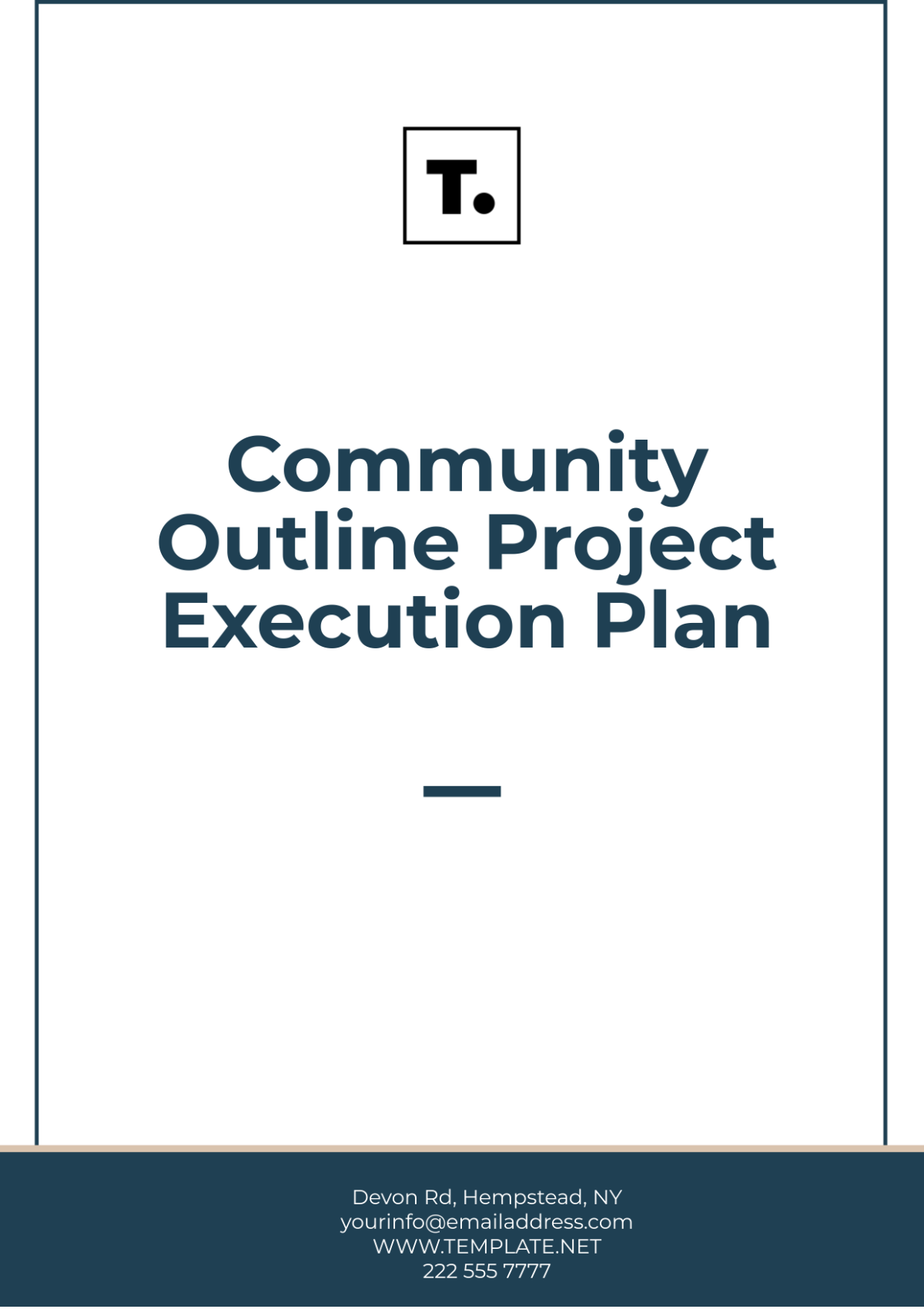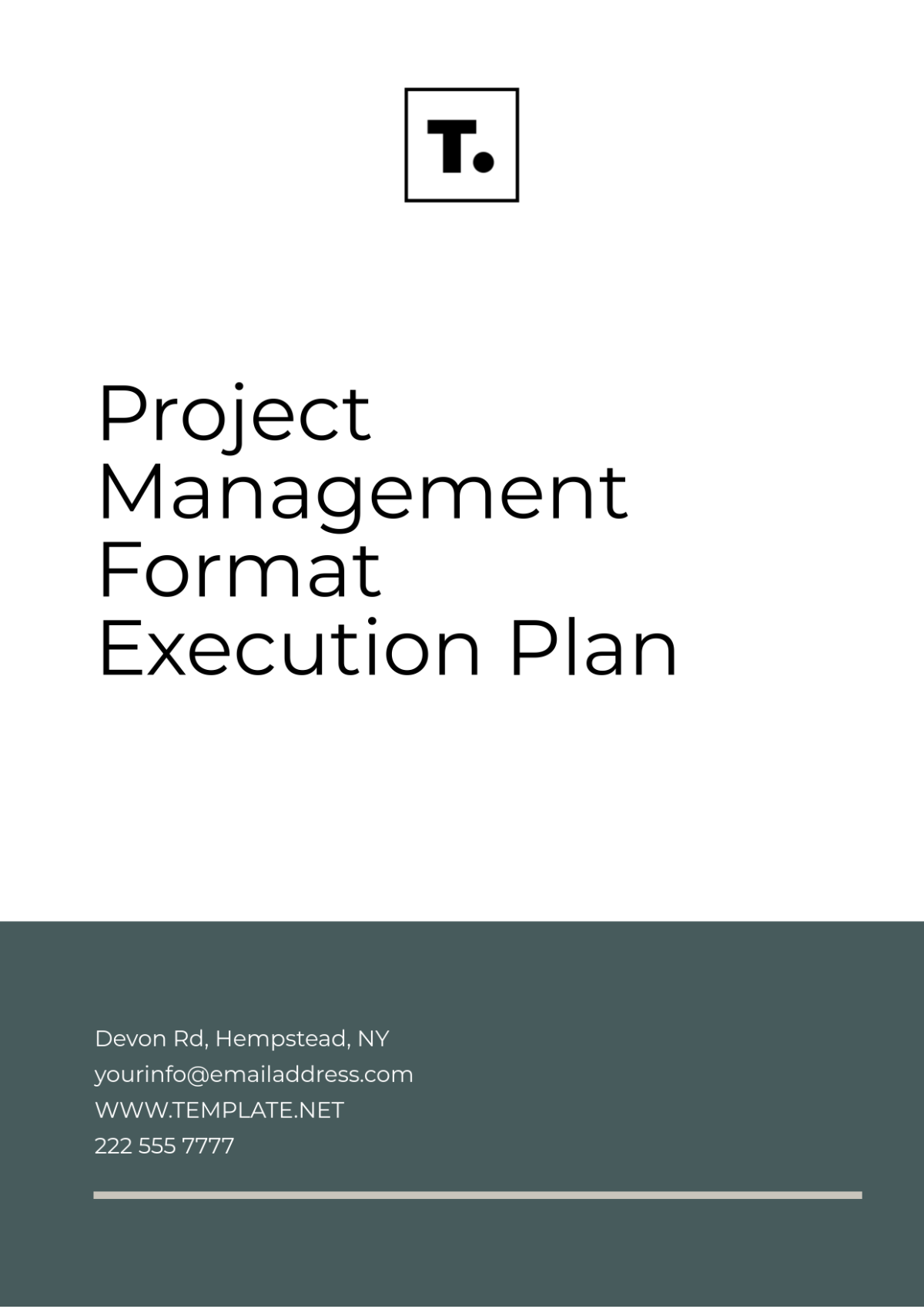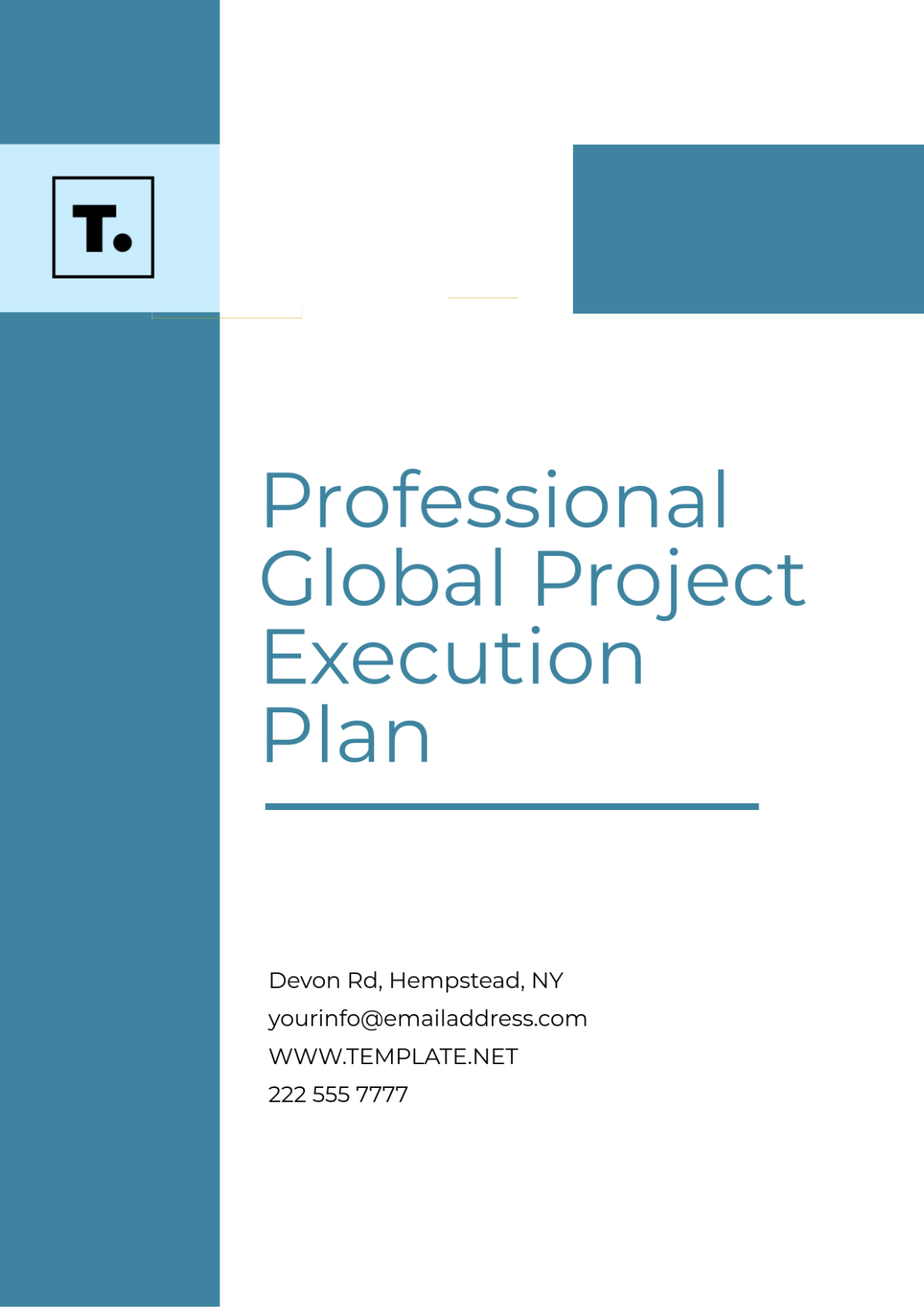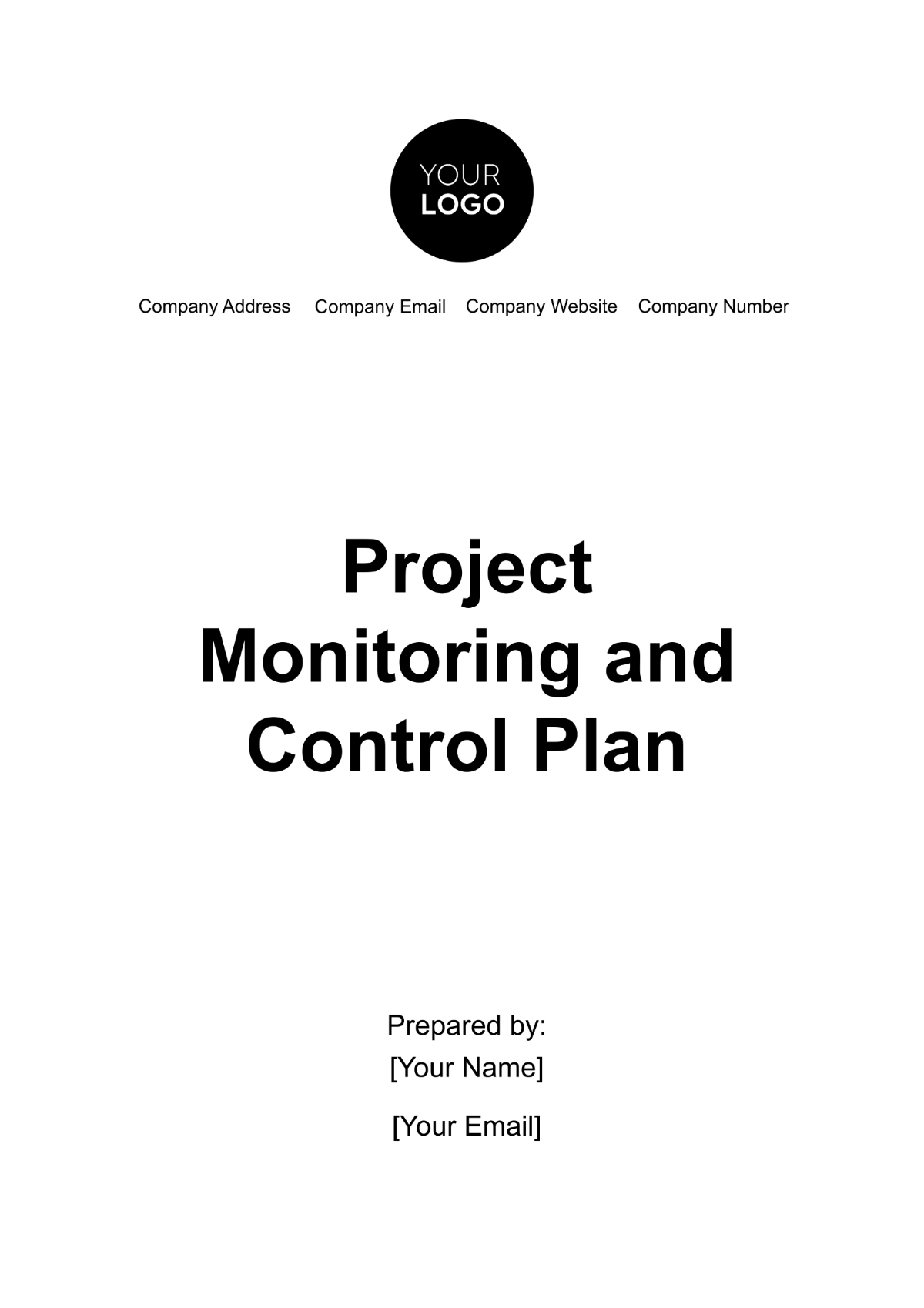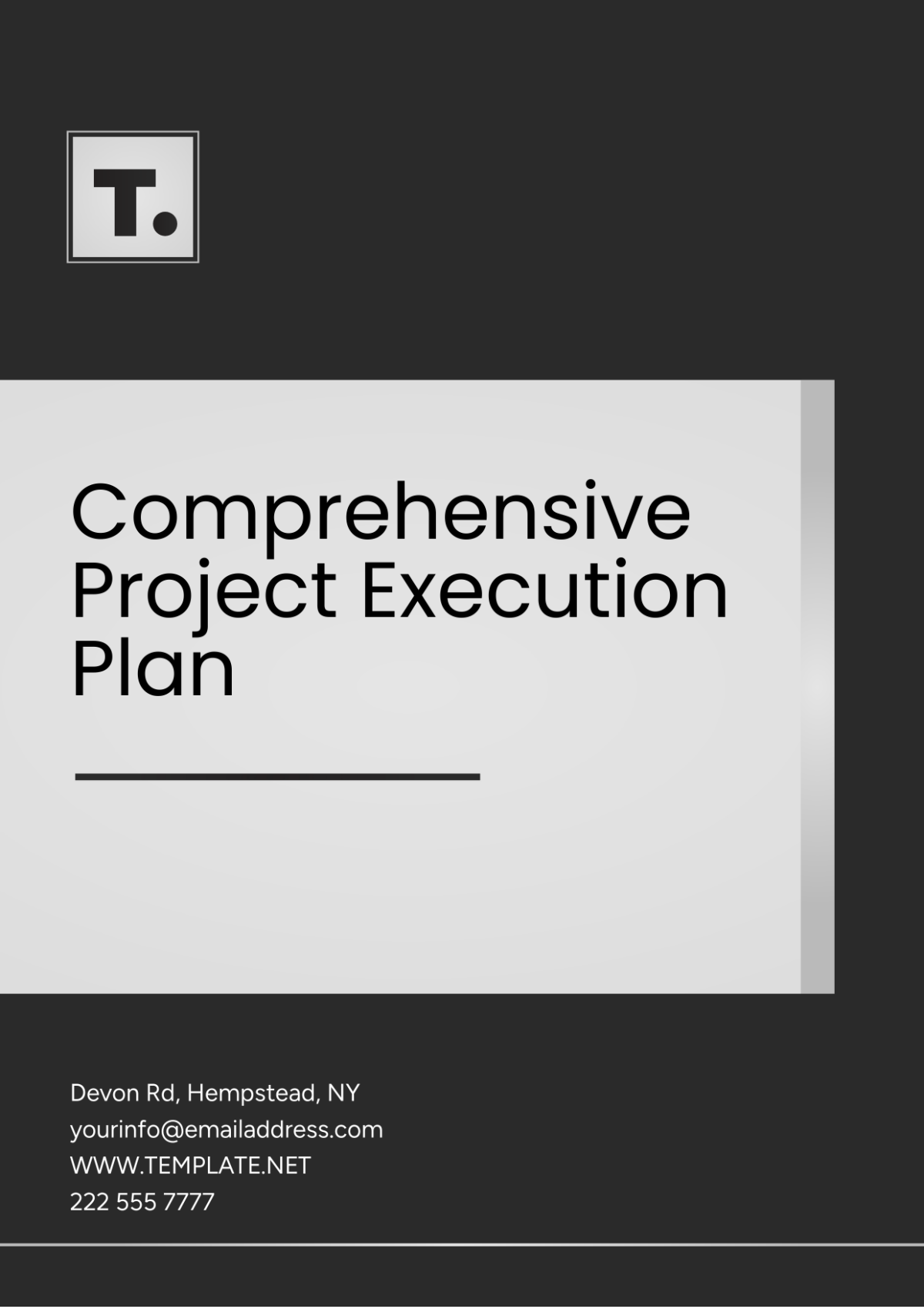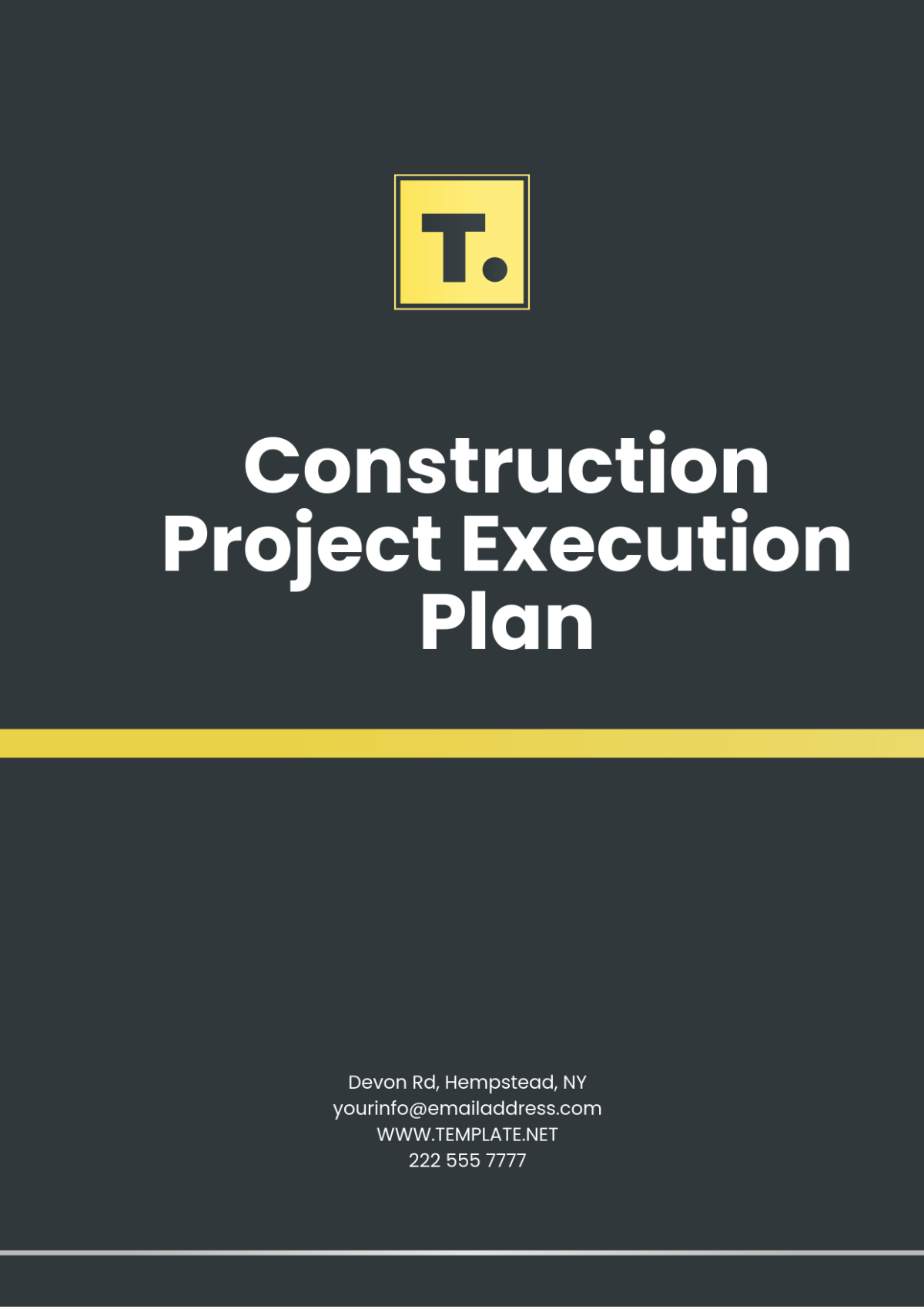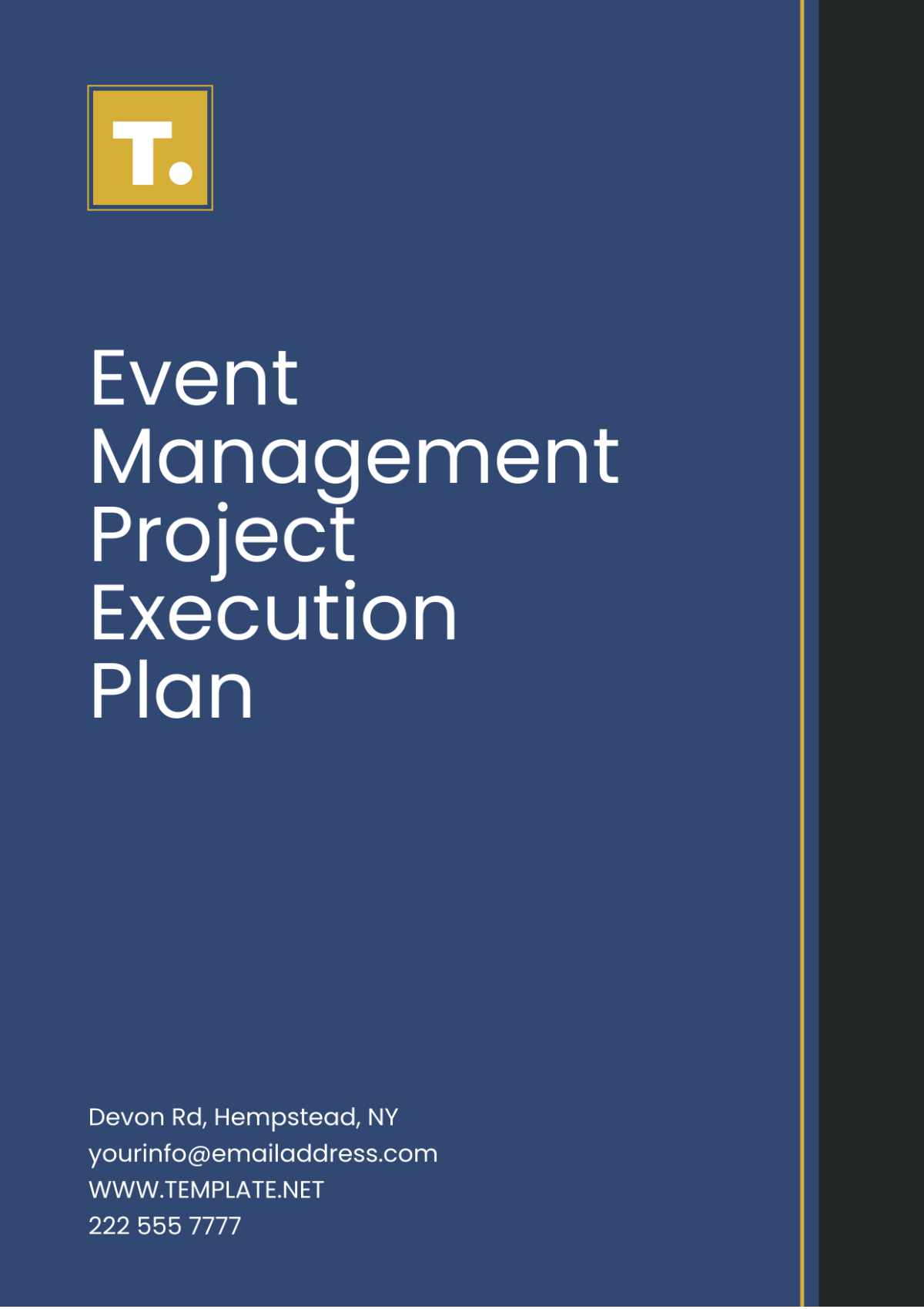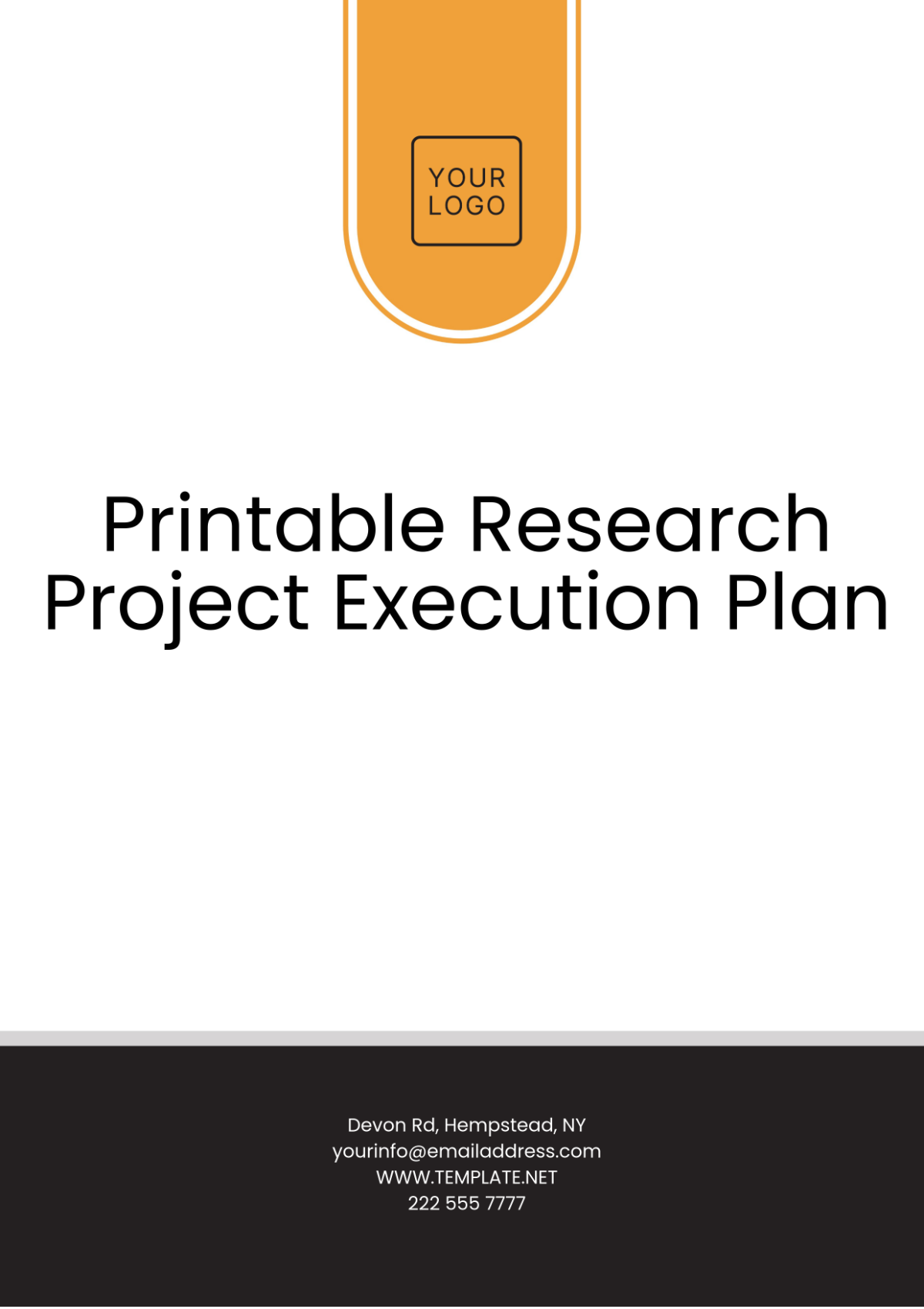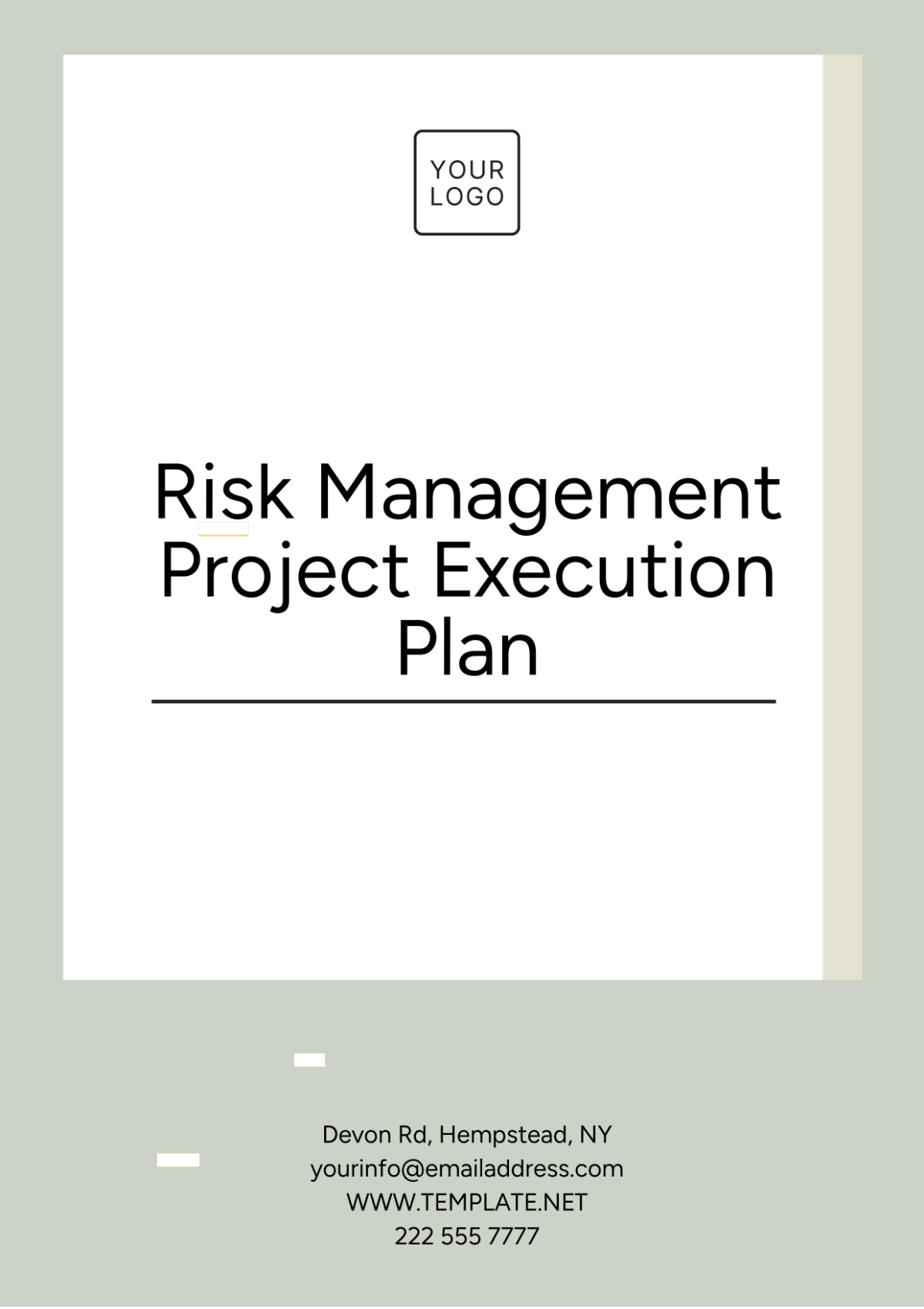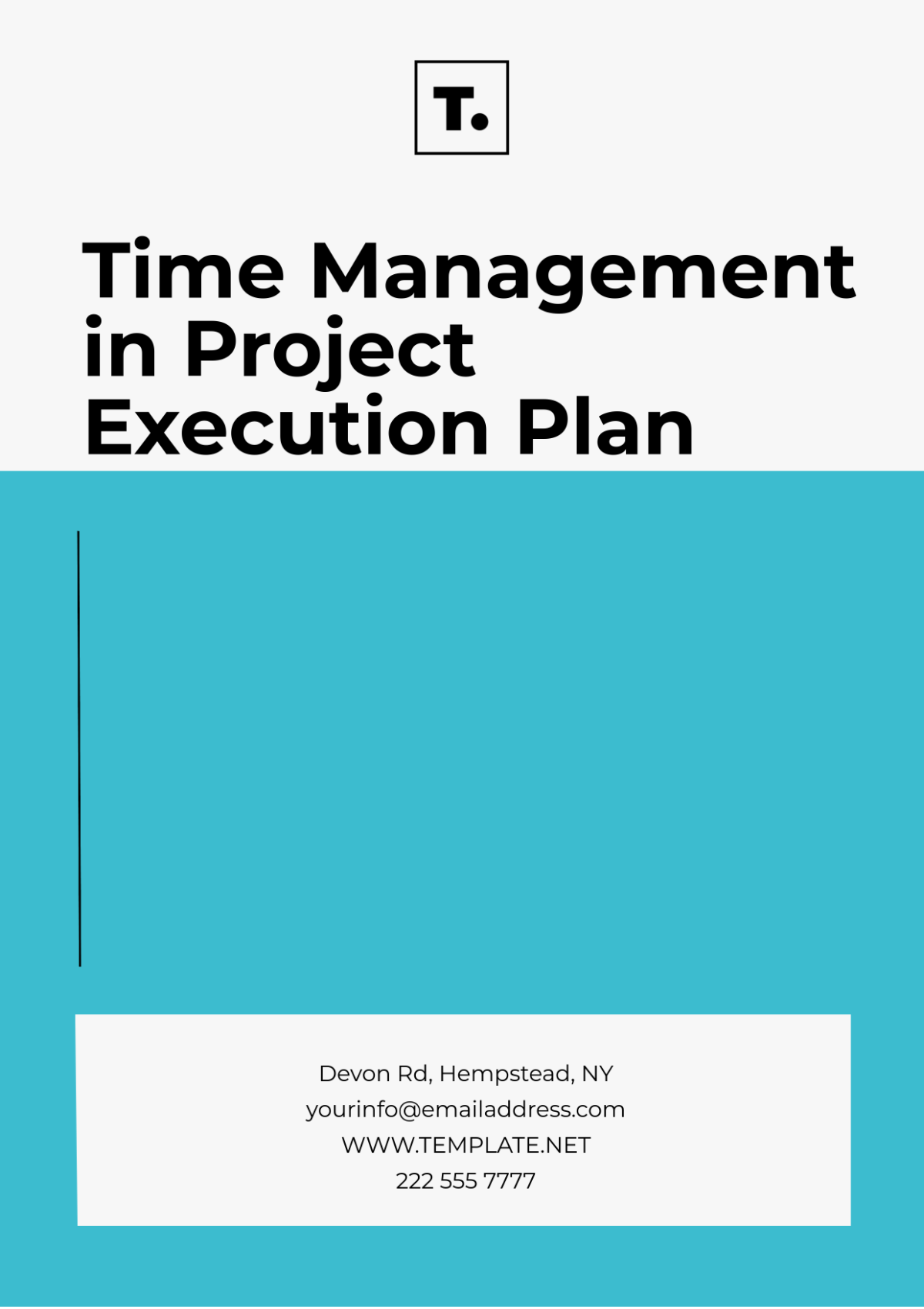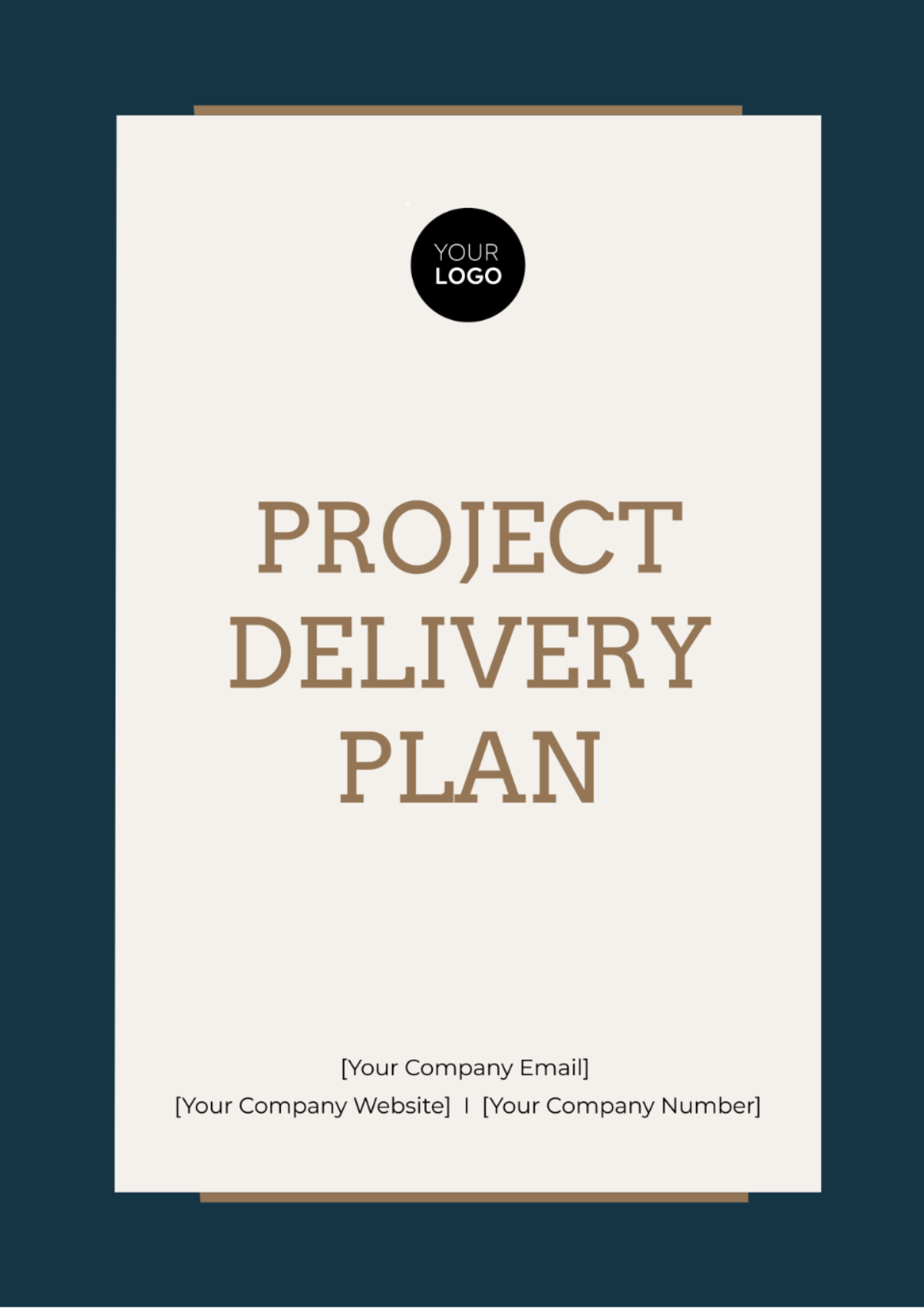Project Integration Management Plan
I. Introduction
A. Purpose of the Project Integration Management Plan
The purpose of this Project Integration Management Plan is to outline the processes, strategies, and methodologies for integrating all project elements at [Your Company Name]. This plan is crucial for ensuring that various project components work together seamlessly to achieve project objectives efficiently and effectively. It provides a structured approach to managing and coordinating all aspects of the project, ensuring that the project is completed successfully within the set timeline and budget.
This plan serves as a comprehensive guide for the project manager and team members, providing clarity on how different project activities will be coordinated and how any issues or changes will be managed. It also ensures alignment with the strategic goals of [Your Company Name], facilitating smooth communication and collaboration among all stakeholders involved.
B. Scope
The scope of this Project Integration Management Plan covers all aspects of the project, including the planning, execution, monitoring, and closing phases. This plan outlines the processes and procedures for integrating various project elements, such as:
Human Resources: Management of project team members, their roles, responsibilities, and performance.
Financial Management: Budget planning, monitoring, and control to ensure the project remains within financial constraints.
Stakeholder Engagement: Communication and collaboration with all parties involved or affected by the project.
Risk Management: Identification, assessment, and mitigation of risks that could impact the project’s success.
Procurement: Acquisition of necessary resources, services, or materials.
Quality Control: Ensuring that the project deliverables meet the required standards and expectations.
Project Communication: Efficient communication channels and practices to keep all stakeholders informed.
The project is scheduled to run from January 2050 to December 2052, spanning over three years with multiple phases. This plan ensures that all activities are aligned with the project goals and strategic objectives of [Your Company Name].
II. Project Overview
A. Project Objectives
Objective 1: To complete the integration of our project goal, including all associated deliverables, by December 2052. This involves coordinating activities across various departments to ensure timely and successful project execution.
Objective 2: To ensure that all project components, including scope, schedule, and resources, are aligned with [Your Company Name]'s strategic goals. This will involve detailed planning and regular alignment checks to confirm that project outcomes support the company’s long-term vision.
Objective 3: To establish a robust project communication and coordination strategy that enables smooth integration of project deliverables. This includes creating efficient communication channels, scheduling regular updates, and managing stakeholder expectations.
B. Project Deliverables
Detailed Project Schedule: A comprehensive timeline including milestones, deadlines, and dependencies, ensuring that all tasks are completed on time.
Resource Management Plans: Plans detailing the allocation and management of human resources, technology, and equipment needed for the project.
Quality Management Plan: A detailed plan outlining the quality standards and metrics that must be met to ensure that deliverables are of the highest quality.
Final Project Report: A comprehensive report summarizing the entire project, including achievements, lessons learned, and recommendations for future projects.
C. Project Milestones
Initial Planning Completion: The project’s initial planning phase, including scope definition and schedule development, to be completed by December 2050.
Execution Phase Completion: The main execution phase, including the implementation of key project activities, to be completed by July 2051.
Quality Control Review: A thorough review of quality standards and deliverables to ensure they meet the required criteria, to be completed by March 2052.
Final Delivery: The final delivery of project outcomes, including documentation and stakeholder sign-off, to be completed by December 2052.
III. Project Integration Processes
A. Develop Project Charter
The Project Charter is a crucial document that formally authorizes the project and outlines its key elements. For [Your Company Name], the charter will include:
Project Name: The official name of the project.
Project Manager: The designated individual responsible for overseeing the project’s execution and ensuring its success.
Stakeholders: A list of internal and external parties with an interest in or influence over the project.
Project Objectives: Clear and detailed goals that the project aims to achieve by the end of 2052.
Project Approval: The formal approval of the project charter by key decision-makers at [Your Company Name], ensuring that the project has the necessary support and resources.
B. Develop Project Management Plan
The Project Management Plan integrates all subsidiary plans and serves as the roadmap for project execution. Key components include:
Scope Management Plan: Defines how the project scope will be developed, validated, and controlled. This includes defining project boundaries, deliverables, and any constraints or assumptions.
Schedule Management Plan: Details the process for creating and managing the project schedule. This includes defining project timelines, setting milestones, and using tools like Gantt charts and project management software.
Cost Management Plan: Outlines the budgetary controls and processes for managing project costs. This includes cost estimation, budgeting, and financial reporting to ensure that the project remains within its allocated budget.
Quality Management Plan: Specifies how quality will be managed and controlled throughout the project. This includes defining quality standards, conducting quality assurance, and implementing quality control measures.
Resource Management Plan: Details the processes for acquiring and managing human resources, technology, and equipment. This includes resource planning, allocation, and tracking.
Risk Management Plan: Identifies potential risks, assesses their impact, and develops mitigation strategies. This includes creating a risk register, monitoring risks, and implementing risk response plans.
Plan Element | Key Action | Completion Date |
|---|---|---|
Scope Management Plan | Define project scope with stakeholders | December 2050 |
Schedule Management Plan | Develop detailed project timeline | January 2051 |
Cost Management Plan | Create budget and financial controls | February 2051 |
Quality Management Plan | Establish quality metrics and standards | March 2051 |
Resource Management Plan | Allocate and manage resources | April 2051 |
Risk Management Plan | Identify and mitigate risks | May 2051 |
C. Direct and Manage Project Work
Directing and managing project work involves the following key activities:
Execution of Project Tasks: Carrying out the tasks as defined in the Project Management Plan, ensuring that all project activities are executed as planned.
Resource Allocation: Monitoring and adjusting the allocation of resources to ensure optimal use and addressing any resource constraints.
Communication Management: Facilitating effective communication among project team members and stakeholders to ensure alignment and address any issues or concerns.
Deliverable Management: Regularly reviewing project deliverables to ensure they meet the required standards and making adjustments as necessary to stay on track.
To ensure effective management, [Your Company Name] will employ:
Project Management Tools: Utilization of advanced project management software to track progress, manage resources, and communicate with the team.
Regular Status Meetings: Conducting weekly meetings to review project progress, discuss issues, and plan next steps.
Change Management Process: A formal process for managing changes to project scope, schedule, or budget, including impact analysis and stakeholder approval.
D. Manage Project Knowledge
Managing project knowledge involves capturing and leveraging organizational knowledge to improve project outcomes. Key strategies include:
Knowledge Repository: Establishing a central repository for all project-related documents, including plans, reports, and lessons learned.
Team Collaboration: Encouraging team members to share knowledge and insights through regular meetings and collaborative tools.
Historical Data Utilization: Using data and experiences from previous projects to inform decision-making and enhance project performance.
IV. Monitoring and Controlling the Project
A. Monitor and Control Project Work
Monitoring and controlling project work ensures that the project stays aligned with its goals. This involves:
Performance Metrics: Regularly measuring project performance against planned objectives using key performance indicators (KPIs) and performance metrics.
Variance Analysis: Comparing actual performance to the planned performance to identify deviations and taking corrective actions as needed.
Project Forecasts: Updating forecasts for project cost, schedule, and resource requirements based on current performance and future projections.
B. Integrated Change Control
Integrated Change Control involves managing changes to the project in a structured manner. Key processes include:
Change Requests: Formal submission of any proposed changes to scope, schedule, or budget, including a detailed description and justification.
Impact Analysis: Assessing the potential impacts of changes on project objectives, resources, and timelines to determine if they are feasible and beneficial.
Change Approval: Obtaining approval from the project steering committee or decision-makers before implementing any changes, ensuring that all implications are considered.
C. Risk Monitoring
Ongoing risk monitoring is essential for managing project risks effectively. This includes:
Regular Risk Reviews: Conducting periodic reviews of identified risks to assess their current status and relevance.
Mitigation Implementation: Ensuring that risk mitigation strategies are implemented and adjusted as needed to address new or evolving risks.
Risk Communication: Keeping stakeholders informed about risk status and mitigation actions to maintain transparency and manage expectations.
V. Closing the Project
A. Closing Process
The closing process involves finalizing all project activities and formally closing the project. Key activities include:
Completion of Deliverables: Verifying that all project deliverables have been completed and meet the required quality standards before handover.
Project Closure Documentation: Preparing a comprehensive project closure report that includes lessons learned, project performance data, and final project outcomes.
Stakeholder Sign-Off: Obtaining formal acceptance and sign-off from key stakeholders, ensuring that they are satisfied with the project results.
B. Post-Project Evaluation
Post-project evaluation is conducted to assess the overall success of the project and identify areas for improvement. This involves:
Performance Review: Analyzing project performance against initial objectives and success criteria to determine how well the project met its goals.
Lessons Learned: Documenting lessons learned from the project to provide valuable insights for future projects and improve organizational practices.
Celebrating Successes: Recognizing and celebrating the achievements of the project team and acknowledging their contributions to the project’s success.
VI. Roles and Responsibilities
A. Project Manager
The Project Manager is responsible for overseeing all aspects of the project, including planning, execution, and closure. Key responsibilities include:
Project Planning: Developing and maintaining the Project Management Plan, ensuring alignment with project objectives and stakeholder expectations.
Team Leadership: Leading and motivating the project team, managing performance, and resolving conflicts.
Stakeholder Communication: Maintaining effective communication with stakeholders to keep them informed and engaged throughout the project.
Risk Management: Identifying and mitigating risks to ensure the project stays on track and meets its objectives.
B. Project Team Members
Project team members are responsible for executing specific tasks and activities as defined in the Project Management Plan. Their responsibilities include:
Task Execution: Completing assigned tasks and deliverables on time and to the required quality standards.
Collaboration: Working collaboratively with other team members and stakeholders to achieve project objectives.
Reporting: Providing regular updates on task progress, issues, and risks to the Project Manager.
C. Stakeholders
Stakeholders are individuals or groups with an interest in the project’s outcome. Their roles include:
Providing Input: Offering feedback and input on project deliverables and decisions.
Reviewing Deliverables: Reviewing and approving project deliverables to ensure they meet expectations.
Supporting the Project: Providing support and resources as needed to facilitate project success.
VII. Communication Plan
A. Communication Objectives
The communication plan aims to ensure that all project stakeholders are kept informed and engaged throughout the project. Key objectives include:
Timely Updates: Providing regular updates on project progress, milestones, and any issues or changes.
Clear Messaging: Ensuring that communication is clear, concise, and tailored to the needs of different stakeholders.
Feedback Mechanisms: Establishing mechanisms for stakeholders to provide feedback and ask questions about the project.
B. Communication Channels
The following communication channels will be used to facilitate effective project communication:
Email: For formal communication and sharing detailed project updates and documentation.
Meetings: Regular meetings, including weekly status meetings and monthly review meetings, to discuss project progress and address any issues.
Project Management Software: Online tools for tracking project progress, managing tasks, and facilitating team collaboration.
Reports: Periodic reports, including status reports and performance reviews, to provide a comprehensive overview of project progress.
C. Communication Schedule
The communication schedule outlines when and how often various communication activities will occur. Key elements include:
Weekly Status Updates: Weekly email updates summarizing project progress, issues, and upcoming tasks.
Monthly Review Meetings: Monthly meetings with key stakeholders to review project performance, discuss any challenges, and plan next steps.
Quarterly Progress Reports: Comprehensive reports detailing project achievements, budget status, and performance metrics.
VIII. Change Management
A. Change Management Process
The change management process ensures that changes to the project are managed in a structured and controlled manner. Key steps include:
Change Request Submission: Formal submission of change requests, including a detailed description and justification for the change.
Impact Assessment: Evaluation of the potential impact of the proposed change on project scope, schedule, budget, and resources.
Approval Process: Review and approval of change requests by the project steering committee or decision-makers.
Implementation: Execution of approved changes and integration into the Project Management Plan.
B. Change Control Board
The Change Control Board (CCB) is responsible for reviewing and approving change requests. Members typically include:
Project Manager: Oversees the change management process and ensures that changes are implemented effectively.
Key Stakeholders: Provides input and approval for changes that impact their areas of responsibility.
Subject Matter Experts: Offers expertise and insights into the potential impacts and feasibility of proposed changes.
C. Documentation of Changes
All changes to the project must be documented to ensure transparency and accountability. Documentation includes:
Change Request Forms: Detailed forms outlining the nature of the change, its impact, and the rationale for the request.
Change Logs: A comprehensive log of all approved changes, including details of the change, the date of approval, and any associated adjustments to the Project Management Plan.
Updated Project Plans: Revised versions of project plans reflecting the implemented changes and any adjustments to project scope, schedule, or budget.
IX. Risk Management
A. Risk Identification
Risk identification involves recognizing potential risks that could impact the project. Key activities include:
Risk Workshops: Conducting workshops with project team members and stakeholders to brainstorm potential risks.
Risk Register: Creating a risk register to document identified risks, including their descriptions, potential impacts, and likelihood.
B. Risk Assessment
Risk assessment evaluates the significance of identified risks and prioritizes them based on their potential impact and probability. Key steps include:
Risk Analysis: Assessing the likelihood and impact of each risk to determine its priority and potential consequences.
Risk Ranking: Ranking risks based on their severity to focus on those with the highest potential impact.
C. Risk Mitigation
Risk mitigation involves developing strategies to address identified risks and minimize their impact. Key strategies include:
Risk Response Plans: Creating detailed plans for each high-priority risk, including actions to reduce the likelihood of occurrence or mitigate its impact.
Contingency Planning: Developing contingency plans to address risks that cannot be fully mitigated, ensuring that the project can continue smoothly if the risk materializes.
D. Risk Monitoring and Control
Ongoing monitoring and control of risks ensure that mitigation strategies are effective and that new risks are addressed promptly. Key activities include:
Regular Risk Reviews: Conducting periodic reviews of the risk register to update risk status and assess the effectiveness of mitigation strategies.
Risk Reporting: Providing regular reports on risk status to stakeholders, including any changes or new risks identified.
X. Quality Management
A. Quality Planning
Quality planning involves defining the quality standards and processes that will be used to ensure that project deliverables meet the required criteria. Key elements include:
Quality Standards: Establishing quality standards and benchmarks for project deliverables.
Quality Assurance Processes: Developing processes to ensure that quality standards are met throughout the project lifecycle.
Quality Control Procedures: Implementing procedures to monitor and control the quality of project deliverables.
B. Quality Assurance
Quality assurance focuses on preventing defects and ensuring that quality standards are met. Key activities include:
Process Audits: Conducting regular audits of project processes to ensure compliance with quality standards.
Training and Development: Providing training and resources to project team members to enhance their skills and knowledge related to quality.
C. Quality Control
Quality control involves monitoring and measuring project deliverables to ensure they meet quality standards. Key activities include:
Inspection and Testing: Performing inspections and tests on project deliverables to verify their quality.
Issue Resolution: Addressing any quality issues or defects identified during inspections or testing to ensure that deliverables meet the required standards.
D. Continuous Improvement
Continuous improvement involves regularly evaluating and improving project processes and practices. Key activities include:
Feedback Collection: Gathering feedback from stakeholders and team members to identify areas for improvement.
Process Improvement Initiatives: Implementing initiatives to enhance project processes and practices based on feedback and lessons learned.
XI. Project Closure
A. Final Project Review
The final project review assesses the overall success of the project and provides insights for future projects. Key elements include:
Performance Evaluation: Evaluating project performance against initial objectives and success criteria.
Lessons Learned: Documenting lessons learned from the project to inform future projects and improve organizational practices.
Stakeholder Feedback: Collecting feedback from stakeholders on their satisfaction with the project outcomes and process.
B. Handover and Acceptance
The handover and acceptance process involves transferring project deliverables to the client or end-user and obtaining formal acceptance. Key activities include:
Deliverable Handover: Providing all project deliverables to the client or end-user, including documentation, reports, and any other materials.
Acceptance Testing: Conducting acceptance testing to ensure that deliverables meet the client’s requirements and expectations.
Formal Acceptance: Obtaining formal acceptance and sign-off from the client or end-user to conclude the project.
C. Documentation and Archiving
All project documentation must be finalized and archived for future reference. Key activities include:
Final Documentation: Preparing and finalizing all project documentation, including reports, plans, and records.
Archiving: Storing project documentation in a secure and accessible location for future reference and audit purposes.
D. Project Team Recognition
Recognizing and celebrating the achievements of the project team is essential for acknowledging their contributions and fostering a positive work environment. Key activities include:
Recognition Awards: Providing awards or recognition to team members for their outstanding contributions to the project.
Celebration Event: Organizing a celebration event to acknowledge the team’s efforts and successes.
XII. Lessons Learned
A. Documentation of Lessons Learned
Documenting lessons learned is critical for improving future project management practices and avoiding repeat mistakes. Key activities include:
Lessons Learned Sessions: Conducting sessions with the project team and stakeholders to discuss and document lessons learned.
Lessons Learned Repository: Creating a repository to store and organize lessons learned for future reference and knowledge sharing.
B. Analysis and Implementation
Analyzing and implementing lessons learned helps to improve organizational practices and enhance project outcomes. Key activities include:
Analysis: Reviewing documented lessons learned to identify patterns, trends, and areas for improvement.
Implementation: Integrating lessons learned into organizational processes and practices to enhance future project management.
C. Knowledge Sharing
Sharing knowledge gained from lessons learned with other project teams and stakeholders promotes continuous improvement and organizational learning. Key activities include:
Knowledge Sharing Sessions: Organizing sessions to share lessons learned and best practices with other teams.
Training and Development: Incorporating lessons learned into training and development programs to enhance the skills and knowledge of project managers and team members.
XIII. Project Performance Metrics
A. Key Performance Indicators (KPIs)
Key Performance Indicators (KPIs) are used to measure and evaluate project performance. Key KPIs include:
Schedule Performance: Assessing whether the project was completed on time and within the agreed-upon schedule.
Budget Performance: Evaluating whether the project was completed within the allocated budget.
Quality Performance: Measuring the quality of project deliverables against established standards and criteria.
Stakeholder Satisfaction: Assessing the level of satisfaction among stakeholders with the project outcomes and process.
B. Performance Reporting
Performance reporting involves regularly reporting on project performance to stakeholders. Key activities include:
Status Reports: Providing regular status reports on project progress, achievements, and any issues or risks.
Performance Dashboards: Creating visual dashboards to present key performance metrics and trends.
Final Performance Report: Preparing a comprehensive final performance report summarizing project achievements, challenges, and lessons learned.
C. Continuous Monitoring
Continuous monitoring of project performance ensures that any deviations from the plan are addressed promptly. Key activities include:
Ongoing Tracking: Monitoring project performance against KPIs throughout the project lifecycle.
Adjustments: Making necessary adjustments to the project plan and processes based on performance data and feedback.
